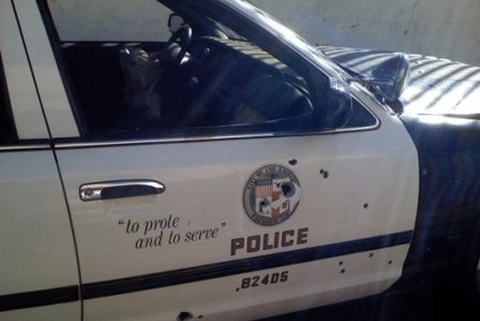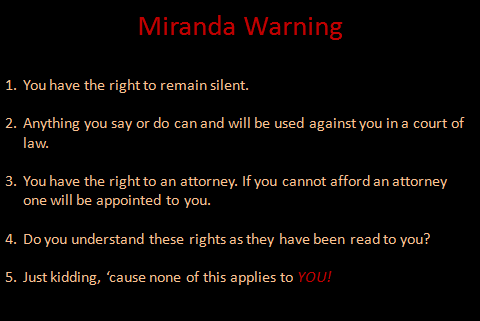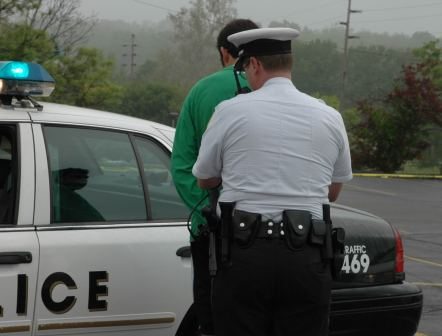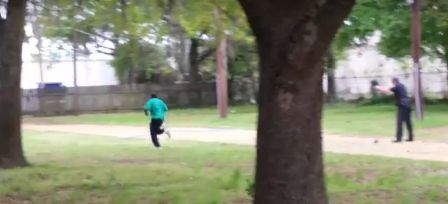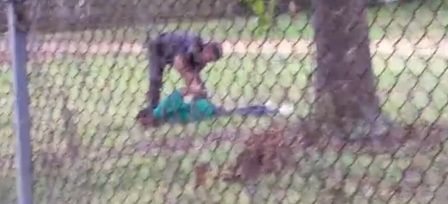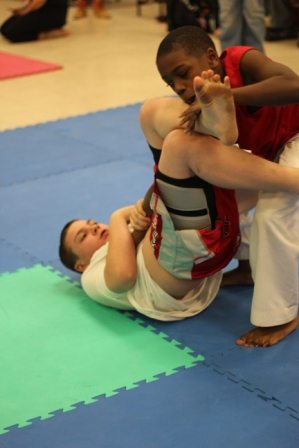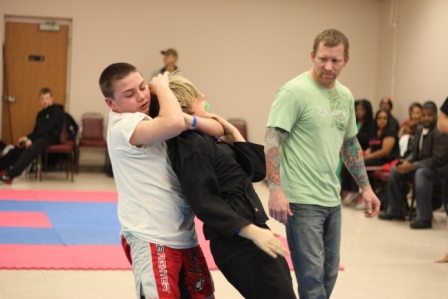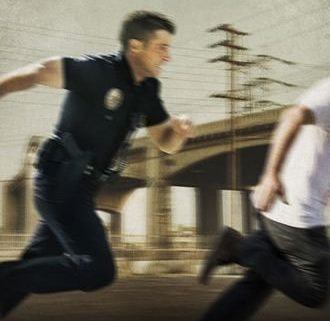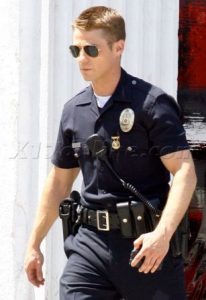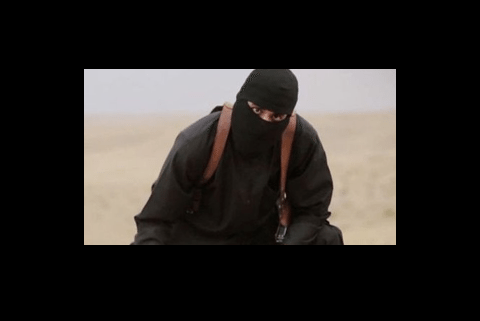We see it on TV. We see it in the movies. And we read it in your books. In fact, we see real-life officers doing it in on the street. Yes, many heroes, both real and fictional, use their vehicles for cover when they’re involved in a shootout. But are personal vehicles really an effective means of providing safety from incoming gunfire?
Well, let’s see what the experts had to say. I believe you’ll find the results a bit stunning. Actually, you may want to rethink your options when Billy Badass decides to plink off a few rounds in your direction.
1. When fired straight-on at the engine block from a distance of 25 yards, many .223 cal. (rifle) rounds totally disintegrated, turning into a mass of individual pieces of shrapnel. However, there were rounds that didn’t hit dead center and actually ricocheted and exited the engine compartment by way of fenders, etc. Therefore, an officer using the front fender as cover could be killed by indirect gunfire.
Let’s not forget all those bits of broken-up lead flying around. After all, pieces of shrapnel are nothing less than tiny bullets/projectiles that are just as capable of killing as a full-size, intact round.
2. Next were the car doors. We’ve all seen the hero cop crouching behind his car door, popping up every few seconds to return fire. At 25 yards, the same .223 cal. rifle rounds passed through car doors as if they were melting butter. Actually, at that distance, the rounds passed through the driver’s door, through two mannequins seated as if they were a driver and passenger, and then through the passenger’s side door. At 100 yards, the round again passed entirely through the vehicle, exiting the passenger’s door. This time, however, the bullet had slowed a bit, causing it tumble end over end instead of spinning. By the way, a tumbling bullet leaves a keyhole-shaped exit hole when passing through metal. Imagine what effect that would have on human flesh.
3. I remember my firearms instructor telling us (a class of moon-faced, buzz cut, recruits) that we could use our patrol car wheels as cover . He said they’d provide some protection for us during a gun battle. Well, at a distance of 100 yards, .223 rounds traveled through the steel wheels as if they weren’t there at all.
Those same experts fired a .45 at the driver’s door from a distance of 15 yards. Guess what? Yep, the rounds pierced the doors, striking the mannequins inside. This time, however, the rounds stopped at the dummies. They’d lost enough velocity that they could travel no further. BUT…that’s all the power and distance needed to kill the occupants inside the car.
So, what do we take away from this information? Easy answer…vehicles are NOT a totally safe haven from gunfire. Rounds can pierce metal and hit the officer. They can break apart, or ricochet, and still hit the officer. And they can pass directly through car doors. In other words, a vehicle is not the best option for cover. But they’re better than no cover at all. Then again, a mound of soft and gooey marshmallows is better than no cover at all.
But, as we taught in the academy… YOU (and the hero of your stories) WILL SURVIVE!
In fact, believe that you’ll survive, no matter what, and you’ve won half the battle. Simply because you’ve been hit by a round or two, or even pieces of shrapnel, doesn’t mean that you or your protagonist has to fall down and die.
Don’t believe me? Well, just ask Jack Reacher…

